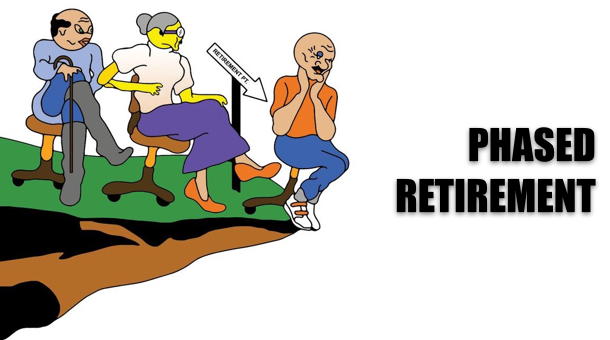Closing the Gap / Part 1
Is there a “generation gap” between today’s seniors and younger people, whether Boomers (many of whom are now seniors), Gen Xers, or Millennials? As we explored in Warfare or Welfare?, the answer in the workplace is “no”: just as kids and grandparents are a natural fit, younger employees enjoy learning from mature mentors, who act as a company’s living archive.
 And in today’s economy, businesses want to keep elder workers and their decades of accumulated business acumen on the job a little longer. They’ve evolved a way to do so that serves everyone involved. It’s known as phased retirement, which could dovetail nicely with seniors postponing their reverse mortgage application for a few years.
And in today’s economy, businesses want to keep elder workers and their decades of accumulated business acumen on the job a little longer. They’ve evolved a way to do so that serves everyone involved. It’s known as phased retirement, which could dovetail nicely with seniors postponing their reverse mortgage application for a few years.
Winding Down with Grace
In phased retirement, someone who is ready to reduce their workload but not quite ready to quit cold turkey lightens their schedule, so they still generate an income, but at a less intense pace than previously. It’s a win for everyone: companies keep the skilled employee as a team member a little longer, the experienced worker is available to mentor younger staff, and the gradual reduction allows him or her to ease into retirement, rather than going from full-time to no time in one fell swoop, which can be very disorienting to people accustomed to defining themselves by their job.
In fact, with 10,000 Boomers turning 65 daily, “businesses are scrambling to find ways to slow an exodus of the most experienced employees and ensure that they pass along their knowledge before they leave,” notes Bloomberg Businessweek. “Fourteen percent of U.S. companies offered either a formal or informal phased retirement program in 2016, up from 10 percent in 2012, according to the Society for Human Resource Management.”
Refining and Redefining Retirement
A recent survey found that among pre-retirees age 50 and up, just over a third (35%) want to continue to work part-time in retirement, often in exciting new careers. Another third envision cycling between work and leisure, five percent wanted to continue working full time, and only 28 percent said they never want to work for pay again — though this doesn’t rule out volunteering, sitting on advisory boards, or similar unpaid opportunities.
Older workers want to stay engaged and keep working, but in new ways, affirms Paul Irving, chairman of the Milken Institute Center for the Future of Aging. And for some businesses, such as skilled trades, retaining these older employees is essential. Steelcase, for example, manufactures more than 5,000 desks, tables, and file cabinets a day. The company has an apprentice program for Millennials, but a shortage of Gen X workers. One manager reports, “We’ve got a big gap in the middle, so we have to keep talented people in their sixties a little longer.”
Clearly, when it comes to the workplace, the generation gap has been reimagined as an inclusive arrangement that works for all. Beyond income, however, one of the greatest reasons for remaining employed later in life is a sense of purpose.
We’ll focus on the role of purpose and connection in seniors’ lives next week, in Closing the Gap/Part 2.






No comment yet, add your voice below!